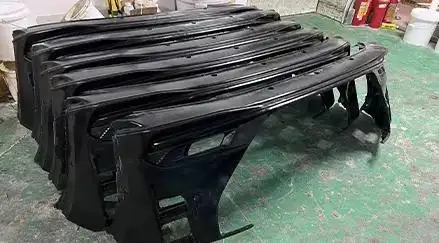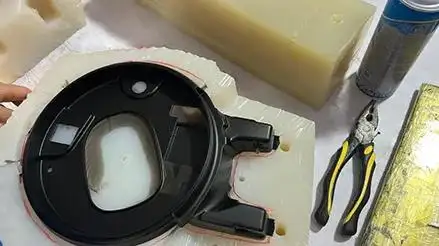Why Low Volume Vacuum Casting Solves Costly Prototyping Issues
Low Volume Vacuum Casting can change how your team prototypes. It cuts avoidable costs. It delivers smooth surfaces and sharp details. It moves from idea to part in days, not weeks. You get small batches without hard tooling. You keep flexibility for last-minute changes. You test real materials and real fits. You show investors parts that look production-ready. Yet the biggest win isn't only speed or price. It's what this process prevents - hidden risks that derail launches. Why does this quiet method solve expensive prototyping issues so well? The answer may surprise you in three specific ways.

How Low Volume Vacuum Casting Shrinks Budgets And Timelines
Most product teams don't overspend on parts - they overspend on delays. Traditional routes demand hard tools, rework, and long queues. Vacuum casting changes the math. We create a master pattern, build a silicone mold, and cast under vacuum to pull out trapped air. The result is clean surfaces, crisp detail, and consistency that mirrors injection molded parts, without the capital expense.
At GD Prototyping, silicone molds are prepared quickly and run efficiently, typically delivering 20+ shots per mold under standard conditions. That means you iterate fast: update the master, pour a new mold, and continue testing in days, not weeks. Our quoting and delivery are tuned for momentum - RFQs answered within 12 hours, and typical part delivery in 7–14 days, depending on geometry and finish. Tight loops drive better decisions, earlier validation, and fewer surprises once you scale.
Material range is another lever. We offer polyurethane systems that emulate ABS and PP for housings and brackets, rubber-like grades for seals or grips, and transparent options for lenses or fluid observation. You can compare stiffness, clarity, or tactile feel without changing processes or vendors. For many teams, that flexibility alone pays back the project in time saved and risk avoided.
- Where The Savings Show Up First
You'll notice the impact of Low Volume Vacuum Casting when you face early-stage uncertainty and need actionable data fast:
• Short runs for market tests, pilot builds, and investor demos
• Complex forms where tooling changes would be slow and costly
• Appearance-critical parts that need uniform color and smooth surfaces
• Material experiments to test hardness, transparency, or grip before committing

What Quality Looks Like With GD Prototyping
Our approach to Low Volume Vacuum Casting is grounded in practical engineering and one-stop finishing. The promise is simple: parts that look and perform like they belong on the product, delivered on a schedule you can trust.
- Dimensional Accuracy And Surface Detail
Casting under vacuum minimizes porosity and shrink-related defects. Fine textures, embossed logos, thin ribs, and small holes are reproduced reliably. Before we cut a mold, our engineers review DFM, choose the right resin, and define a stable process window so your first articles align with expectations and rejections stay near zero.
- Material And Finish Flexibility
We source certified materials and can provide documentation on request. After casting, we complete the part in-house - painting, plating, silk screening, dual-color casting, and overmolding - so your visual and functional targets land together. Need a soft-touch overmold on a rigid shell? A clear light pipe next to a textured bezel? We manage the stack under one roof, which keeps lead time tight and handoffs minimal.

- Where Our Parts Are Used
Teams in toys, consumer products, optics, and automotive rely on vacuum-cast components for fit checks, functional tests, and low-volume drops. Because the parts resemble injection molded output, they also photograph well for launch assets, retail mockups, and roadshow kits - useful when you must persuade stakeholders before the steel is cut.
✅ Why Engineers Choose Our Casting Line
• Fast starts: silicone molds finished in days for quick turns
• Repeatability: consistent geometry and finish across copies
• Process control: DFM review and inspection options on request
• Easy reorders: stable setups and reproducible finishing recipes
Can Low Volume Vacuum Casting De-Risk Your Next Launch?
Moving from CAD to customer feedback is where products live or die. Low Volume Vacuum Casting lets you learn the right lessons at the right price. You can validate assembly stack-ups, run functional stress, and gather real user input, while postponing hard tooling until confidence is high. If feedback demands change, we can rework the master, recast the silicone, and keep your schedule intact.
Below are quick checkpoints to decide if vacuum casting fits your next phase:
• Quantity And Timing
When you need dozens to a few hundred units - fast - vacuum casting beats waiting on steel. It keeps pilots and early shipments moving while the business case matures.
• Aesthetics And Touchpoints
For on-camera samples, investor demos, or retail briefs, consistent surfaces matter. Casting delivers clean textures, reliable color, and refined edges that read "production-ready.”
• Risk And Cost Management
Early tooling changes are expensive and slow. Casting reduces the cost of iteration so you can converge on the right geometry and material feel before you commit.
Not every design should jump straight to injection molding. For toys, optical parts, interior automotive components, and consumer electronics, the smarter route is often a staged path: cast, learn, refine, then scale. You protect capital, compress time, and raise the odds that your first production tool is also your last revision.
Ready To Cut Prototype Spend Without Sacrificing Quality?
Send GD Prototyping your CAD, target quantity, and finishing notes. We'll respond with a clear manufacturing plan and quote within 12 hours. Start with Low Volume Vacuum Casting, layer on the finishes you need, and receive production-like parts in 7–14 days - ready for testing, photos, and customer trials.
Call-to-Action: Get a fast quote today and validate your design sooner with GD Prototyping.

